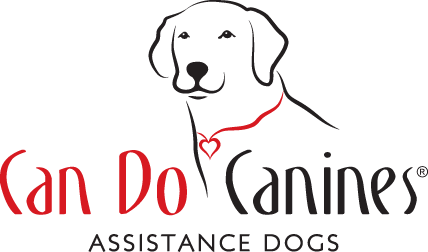Barking is a normal dog behavior. Birds sing, cats meow, and dogs bark...sometimes a lot! It is unrealistic to expect that you can stop all barking, but you can at least get it under control. There are many reasons that dogs bark, some acceptable and some not.
Common Reasons for Barking or Vocalization
Attention: The dog wants your attention or for you to do something
Boredom: The dog barks to amuse himself
Frustration: The dog is confused, frustrated or stressed
Alert: The dog barks to let you know he has seen or heard something
Defensive/Fear: The dog barks to make something go away
Excitement: The dog barks because he's excited in seeing something he wants to get access too, or is over aroused in general
Lack of enrichment: Are you meeting the dog’s physical AND mental needs?
When your dog is barking, the first step is looking at whether you have control over what is reinforcing it or whether you need to switch gears and look at calming him down first. Are they barking at YOU or something in their environment?
Interrupting with Cues
Is your dog capable of responding to a cue when barking such as “go mat,” doing a nose “nudge,” doing a “chin” rest or sitting? If they are, jump right into interrupting the bark by asking for a behavior! While the initial startle bark might still be hard to get rid of, you can work towards your dog learning to look to you and respond to your cues in order to earn rewards.
As soon as the dog barks, cue them to do a simple behavior. You may need to body block (get in between the dog and their trigger to block their sight!) as you ask for the cue.
As the dog responds to the cue, verbally praise him, say his name, and reward several times! It may help to do some slow cookie deliveries where you slowly move the cookie toward the dog to help focus them on the cookie motion and think about something other than their trigger. Always reward your dog for looking at you!
Calming Reward Strategies
However, in many situations, you will quickly find that your dog is not capable of thinking. He is reacting in the moment and not mentally able to switch gears back to you. Your priority in helping a dog doing this type of barking is to get them further from whatever is causing them to bark and to calm them down.
Sometimes getting distance from their trigger will be impossible. If your dog is barking at sounds in your house, you may not be able to even hear what they are reacting to. But if you are able to move your dog away from the window, or turn around and retreat in the other direction on your walk, that will be helpful!
The next step is to use your treats in a way that will help interrupt the barking and also lower their arousal levels.
Licking
If your dog is really struggling, consider using a reward the dog can lick as licking is also a soothing activity for dogs. Lickety Stiks and Leanlix are nice portable treats that can be used on walks. A squeeze food tube can also be used with the reward of your choice such as peanut butter, bananas, yogurt or a mixture of soft foods.
Look at That
If your dog is barking at a clear visual trigger on walks such as people or dogs, try playing the look at that game once your dog is in a calmer state of mind (they are no longer lunging and are able to take treats gently from your hand).
When your dog looks at the other dog, say “yes” and give them a cookie from your hand. Make sure to feed close to your body so your dog turns their head towards you and away from the trigger! Repeat until your dog is easily able to be interrupted with the cookie and is no longer barking.
At that point you can start to switch tactics and instead of rewarding your dog for looking at the trigger, mark “Yes” when they are still looking at you and reward. You can switch to asking for other behaviors at this point too and rewarding your dog frequently for continuing to focus on you.
Attention Barking
This category of barking is going to be handled differently than the other strategies. In this case, the dog is barking at you and looking for a specific reaction. They might be barking to be pet, or to be let out of their crate, or even to get more cookies! Your attention, even if it’s negative attention, has the potential to reinforce the barking.
The fastest way to stop this type of barking is to ignore it in settings where that is possible. No eye contact, no verbal response.
When the dog stops barking, make sure to pause several seconds before praising the dog and/or giving them another cue that you want them to do instead of the barking.
If the dog is barking for general attention, when they are eventually quiet, your cue might be a “visit” to your lap as that can become a way the dog can politely ask you for attention in the future. Consider whether you really need to use food to reinforce the visit (or other cue) or whether you can reinforce simply with your active attention.
In situations where ignoring the barking is simply not an option (like out in public), the tricky part becomes trying to get the dog to quiet as quickly as possible without accidently rewarding it.
Another idea to try is to give the dog a cue every single time they bark, but try to avoid following it up with a food reinforcer for a minimum of 5 seconds. An appropriate cue might be “down.” Try to interact as little as possible as you give this cue and reinforce more frequently for quiet moments before the dog starts to bark again. You may find it less reinforcing to the dog if you use your hand to give a signal for the down and/or use the leash vs making eye contact and verbally cuing the behavior.
For dogs who regularly bark for attention in training sessions or in public, try to replicate boring situations at home when the dog is on leash, you have rewards in your pocket or within reach on the table (to try to replicate the dog thinking about the cookies!), and you are actively ignoring them.
Practice at Home!
To make the fastest progress, you will want to focus on training at home during times your dog is not already over threshold and barking.
- What behaviors do you want your dog to DO when they see/hear their usual trigger (e.g., other dogs, people outside the window, someone coming to the door, etc.)?
- What are the interruption strategies you will be using during the times barking happens?
For the first part, this means you will need to sit down and write a list of what behaviors your dog could do that you will pay them for when they see/hear the trigger. Not barking is not a behavior the dog can do. Are you at home? Perhaps a send to their mat will work. Practice the mat send so the dog can do it without using much brain power. Can the dog do it while you are sitting on the couch? While you are having your hand touch the door? Add distractions to their practice to work up to the dog being able to do the behavior even when they are excited. If your dog primarily barks on walks, do you want your dog to look at you when you say their name? Lie down and wait? Respond to “let’s go” and change directions to come towards you? Pay heavily for these skills in a variety of situations, before you see their triggers.
Finally, what are the interruption strategies you will use when the dog is in a situation their training hasn’t fully prepared them for? Will you call them to you for a hand nudge? Practice this nudge cue often and add distractions. Will you cue “find it” and do a cookie scatter? Practice this cue so that the dog instantly starts to look for their reward when they hear it.
Gradually add distractions to all of these skills so that when your dog is in a situation where they are likely to bark, they can be interrupted quickly and brought into a thinking mode where they are capable of responding to cues.




